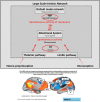The four postulates of freudian unconscious neurocognitive convergences
- PMID: 21734896
- PMCID: PMC3120994
- DOI: 10.3389/fpsyg.2011.00125
The four postulates of freudian unconscious neurocognitive convergences
Abstract
In the 1980s, the terms "cognitive unconscious" were invented to denominate a perspective on unconscious mental processes independent from the psychoanalytical views. For several reasons, the two approaches to unconscious are generally conceived as irreducible. Nowadays, we are witnessing a certain convergence between both fields. The aim of this paper consists in examining the four basic postulates of Freudian unconscious at the light of neurocognitive sciences. They posit: (1) that some psychological processes are unconsciously performed and causally determine conscious processes, (2) that they are governed by their own cognitive rules, (3) that they set out their own intentions, (4) and that they lead to a conflicting organization of psyche. We show that each of these postulates is the subject of empirical and theoretical works. If the two fields refer to more or less similar mechanisms, we propose that their opposition rests on an epistemological misunderstanding. As a conclusion, we promote a conservative reunification of the two perspectives.
Keywords: Freud; cognition; cognitive styles; conflict; intentions; neuroscience; psychoanalysis.
Figures




References
-
- Allport A. (1989). “Visual attention,” in Foundations of Cognitive Science, ed. Posner M. I. (Cambridge, MA: MIT Press; ), 631–682
-
- Ansermet F., Magistretti P. J. (2007). Biology of Freedom: Neural Plasticity, Experience and the Unconscious. New York: Other Press
-
- Arminjon M. (2010). Les intentions du corps, Psychanalyse, biologie et sciences de l'esprit. Montréal: Editions Liber, Collection “Voix Psychanalytiques”
LinkOut - more resources
Full Text Sources
Research Materials

